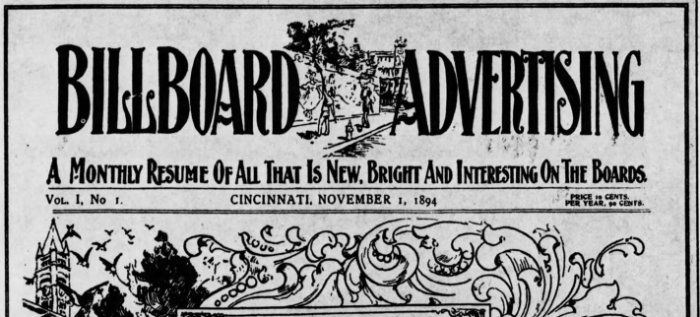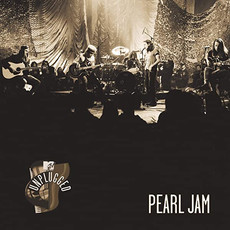Brand from Home | November 5, 2020
- Brand Library&Art Center
- Nov 6, 2020
- 6 min read

Expanded Contactless Pickup Service

On Monday, November 9, Glendale Library, Arts & Culture will expand its successful Contactless Pickup service to Brand Library & Art Center, located at 1601 West Mountain Street, and Montrose Library, located at 2465 Honolulu Avenue. Since June, GLAC has been providing safe, contactless pickup services at the Central Library, making its rich collection of 750,000 physical books, movies and music available to the community while libraries are closed to public access.
Brand Library will offer Contactless Pickup service to patrons with items on hold by appointment only. Pickup service will be available Mondays, Tuesdays, and Saturdays from 12 p.m. – 6 p.m. from the Plaza on the west side of the library and next to the accessible parking lot on the east side.
Author Talk

Join us on Thursday, November 5 at 6:30 p.m. as author and attorney Walter R. Echo-Hawk will discuss his book, In the Courts of the Conqueror: The 10 Worst Indian Law Cases Ever Decided, in conversation with Autry Museum President and Chief Executive W. Richard West Jr. This program is part of the Be the Change series.
Music Playlists
Today's recommending listening is R. Carols Nakai, Peter Frampton, Pearl Jam, and 21st Century Violin Concertos.
Get a free Glendale Library, Arts & Culture Library eCard instantaneously. It can be used to access our online resources including eBooks, eAudiobooks, eNewspapers, eMagazines, online classes, online tutoring, and learning games, as well as streaming movies and music, and more.Try listening to a streaming Playlist from Freegal Music, Naxos Music Library, Naxos Jazz Music Library, Hoopla or Alexander Street free with your library card. Alexander Street will ask for an academic institution, use Glendale Public Library.
Read Music

The Contemporary Music Score Collection is published by the UCLA Music Library. The collection includes the digital, open access scores from the Contemporary Score Edition series, the first open access edition of new music published by a library, and scores from the Kaleidoscope 2020 Call for Scores, an open access collaboration with the UCLA Music Library. 5,500 scores are in the collection.
Learn About Music

Did you know that the Entertainment Industry Magazine Archive has Billboard Magazine issues back to 1894? Variety issues back to 1905? Radio and Records issues back to 1973? Musician issues back to 1982? Login with your library card! Read current issues on RBdigital.

In honor of National Metal Day on November 11, try the Encyclopaedia Metallum: The Metal Archives. Look up album reviews, lineup changes of your favorite bands, similar artists and more.
Streaming Music

The Omaha Indian Music Collection from the Library of Congress includes 873 Native American music recordings you can listen to online. The recordings date back as far as 1980.
Read About Art
Check out a book through our contactless pickup services to learn more about Native American Art. Find more on our reading lists for Native American Heritage Month: Adult, Teens and Children.
Suggested Titles: Art for an Undivided Earth, When I Remember I See Red, Hearts of Our People, and Shapeshifting: Transformations in Native American Art.
Learn About Art

Go behind the scenes with leading Native Artists with the School for Advanced Research. Ever wonder what kind of equipment, materials, techniques, and space artists use to create their work? Go into the workspace of many talented artists live on Instagram and YouTube. Gain insight into the artist’s process, find out where they draw inspiration, and learn how current events are impacting their work and changing their outlook.
Art Inspiration - Try It at Home

IAIA Museum of Contemporary Native Arts welcomes you to engage with contemporary Native art through their array of online resources. Through art-making, curriculum guides, and other fun activities such as word search, crossword puzzles, word scramble, mazes, visitors of all ages can engage with various works of art in MoCNA’s exhibitions and collections. Try out storytelling through comics with Jeffrey Veregge.

From Japan House Los Angeles, illustrator and animator Mino Miyabi will be your guide through a series of short, fun instructional drawing videos (7-10 minutes each) specially tailored for children & families – no experience required. Start with emotions and move on to characters, animals and perspective. Japan House also has some fun ASMR as well!

The House of Illustration has teaching resources online. Try out Comics in the Curriculum. Comics aren’t just about superheroes – they’re a varied and complex art form and these free downloadable resources use them to teach core English skills like critical analysis and descriptive language techniques.
Staff e-Recommendations

Smart, surprising, energetic and political, Alien Weaponry is one of the most commercially successful indigenous metal bands on the planet. They make a point of performing in the native language of New Zealand, Te Reo Maori, using it to celebrate their own indigenous culture and to decry the insidious greed and lasting ill-effects of colonialism on the Maori people. Alien Weaponry uses common metal effects such as raging drums and guitars and merges them seamlessly with lyrics and music inspired by haka, a Maori ceremonial tradition that features coordinated rhythmic shouting as part of battle preparation.
Standout tracks on their first album, Tu, include Kai Tangata (possibly a reference to the Maori deity Kaitangata) and Urutaa ("Plague"). The particularly pointed track "Whispers" opens with the audio from a chilling interview in which a politician remarks that the Maori were a "Stone Age civilization" that benefited from being colonized. The song goes on to explain the colonizing government's mistreatment of the Maori, completely in Maori. The verb "Tu" has many meanings in Maori, but prominent among them is "to fight, engage, or oppose." This is some hardcore headbanging protest music. You can celebrate National Metal Day (11/11) by giving it a listen. -LD

This review did not come in time for Hispanic/Latinx History Month, partly because of how dense of a read it is, but mostly because I found myself reading passages and having to take long pauses to think about public art and their correlation to oppression, exploitation, violence and liberation. The city of Los Angeles was one of the main epicenters of the 1960s Chicano Movement, and one of the best ways to express the struggles of their movement was using public art. Throughout the eastside of the city you’ll see faded murals of Latinx imagery, lives and histories painted on the side of businesses, on main streets and alleyways. Give Me Life: Iconography and Identity in East LA Murals by Holly Barnet-Sanchez presents a thorough documentation of not only the murals, but the histories, commentary on imagery and artists, and how it connects to the real struggles of the people, culture and artists who created it. An early passage sums the need for artwork up perfectly: “The murals discussed here are a contribution to Chicano situating themselves in history. They demonstrated the political idea of what it meant to be a Chicano by proclaiming La Raza’s struggles against hegemonic socio-economic exploitation and institutional oppression while celebrating the liberating effects of the united farm workers and being part of a collective effort to end exploitation, oppression and discrimination via the Chicano civil rights movement.” A mural two blocks from my childhood home (The Workers by Art Zarate) is discussed, and the book included images of the full mural that used to cover two walls, then one, then completely whitewashed so Shephard Fairey could paint an image of Germs singer Darby Crash. To learn about a mural I stared at for most of my childhood, I owe Give Me Life more than I can repay. If you’re interested in a more expansive index of the murals in Los Angeles, I suggest Street Gallery by Robin J. Dunitz, Sadly, the book has not been updated since 1998 but it still is a great list one would like to mural hunting. Also, if anyone is interested in learning how to create a mural using the grid method, there’s a great tutorial on the grid method from this website. -GG

Yo-Yo Ma Silk Road Ensemble - Sing Me Home (2016). This amazing album won a Grammy for Best World Music Album of 2017. Silkroad is a non-profit that was founded by Yo-Yo Ma in 1998. For the Silkroad albums, he has worked with an ever changing lineup of musicians from all over the world. On this album you will hear throat singing, pipa, banjo, jazz guitar, sitar, fiddle, yangqin, accordion, balafon, kora, cello and a wide range of vocal styles. Listen to country singer Sarah Jarosz sing an amazing high energy version of “Little Birdie” with a bluegrass ensemble accented by Ma’s cello and fantastically blended Chinese instruments including pipa and ehru. Madhoushi is warm and inviting, working to a grand crescendo with a mix of Indian singing, sitar, tabla and western strings. Listen to Abagail Washburn’s heartfelt version of Going Home in Mandarin and English. The absolute highlight for me was Rhiannon Giddens, singer/banjo player of the Carolina Chocolate Drops; she performs an amazing version of St. James Infirmary which was made famous by Louis Armstrong. The ensemble, including accordion and Chinese hammered dulcimer, complements her vision of the song. There is so much inspiring music on this album. The bigger lesson that Ma teaches us with this grand collaboration — we can achieve great new things by listening to each other and working together. The CD is also available for pickup and also check out this amazing version of St James Infirmary with Rhiannon Giddens and ensemble on TED. -BW
Covid-19 Resources
Reliable information about the coronavirus (COVID-19) is available from the World Health Organization, the California Department of Public Health, the Los Angeles County Public Health Department, the City of Glendale, and the Library, Arts & Culture department.
Resources for Music Businesses And Industry Workers, Playing for Change, Sounding Point LA
Resources for Freelance Artists, California Arts Council, Americans for the Arts, National Endowment for the Arts




















Comments